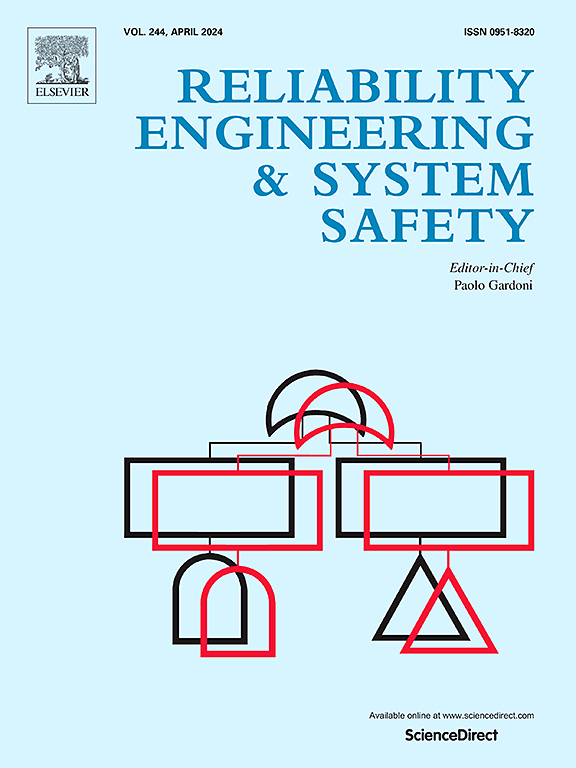Explainable neural-networked variational inference: A new and fast paradigm with automatic differentiation for high-dimensional Bayesian inverse problems
IF 11
1区 工程技术
Q1 ENGINEERING, INDUSTRIAL
引用次数: 0
Abstract
Bayesian inference offers a rigorous framework for parameter inversion and uncertainty quantification in engineering disciplines. Despite advancements introduced by Variational Bayesian Inference (VBI), Bayesian Inverse Problems (BIPs) with implicit and non-differentiable forward solvers still face significant limitations associated with mean-field approximation, computational difficulties, poor scalability, and high-dimensional data complexities. In response to these challenges, a novel Variational Inference (VI) framework featuring equivalent neural network representation with automatic differentiation is proposed. The network architecture “VBI-Net”, comprising a variational distribution sampler, a likelihood function approximator, and a variational free energy loss function, is designed to mirror the VI framework with multivariate Gaussian variational distributions. The sampler yields posterior samples of the system model parameters and prediction errors, while incorporating the variational parameters as differentiable and explainable network parameters by reparameterization trick. The likelihood function approximator employs a neural network as a viable replacement for time-intensive and non-differentiable forward solvers, enabling efficient likelihood function evaluations. The loss function measures the goodness of the variational distribution. The seamless integration of the sampler and approximator guarantees the overall differentiability of the architecture, facilitating the utilization of automatic differentiation, gradient-based optimization methods, and enabling scalability to high-dimensional scenarios. Furthermore, the explainable neural-networked implementation scheme leverages CUDA support embedded in deep learning frameworks to inherently enable parallel computation, GPU acceleration, and optimized tensor operations. To demonstrate its efficacy, the method is applied in Bayesian model updating scenarios involving a numerical shear building and a practical structure.
可解释的神经网络变分推理:高维贝叶斯反问题的一种新的、快速的自动微分范式
贝叶斯推理为工程学科中的参数反演和不确定性量化提供了一个严格的框架。尽管变分贝叶斯推理(VBI)带来了进步,但具有隐式和不可微正解的贝叶斯反问题(BIPs)仍然面临着与平均场近似、计算困难、可扩展性差和高维数据复杂性相关的显着局限性。针对这些挑战,提出了一种具有自动微分的等效神经网络表示的变分推理(VI)框架。网络架构“VBI-Net”包括一个变分分布采样器、一个似然函数逼近器和一个变分自由能损失函数,旨在将VI框架与多变量高斯变分分布相反映。采样器产生系统模型参数和预测误差的后验样本,同时通过重参数化技巧将变分参数作为可微可解释的网络参数。该似然函数逼近器采用神经网络作为时间密集型和不可微前向求解器的可行替代,实现了高效的似然函数评估。损失函数衡量变分分布的好坏。采样器和近似器的无缝集成保证了体系结构的整体可微性,促进了自动微分和基于梯度的优化方法的使用,并实现了高维场景的可扩展性。此外,可解释的神经网络实现方案利用嵌入在深度学习框架中的CUDA支持,固有地实现并行计算,GPU加速和优化张量操作。为了验证该方法的有效性,将该方法应用于数值剪力建筑和实际结构的贝叶斯模型更新场景。
本文章由计算机程序翻译,如有差异,请以英文原文为准。
求助全文
约1分钟内获得全文
求助全文
来源期刊

Reliability Engineering & System Safety
管理科学-工程:工业
CiteScore
15.20
自引率
39.50%
发文量
621
审稿时长
67 days
期刊介绍:
Elsevier publishes Reliability Engineering & System Safety in association with the European Safety and Reliability Association and the Safety Engineering and Risk Analysis Division. The international journal is devoted to developing and applying methods to enhance the safety and reliability of complex technological systems, like nuclear power plants, chemical plants, hazardous waste facilities, space systems, offshore and maritime systems, transportation systems, constructed infrastructure, and manufacturing plants. The journal normally publishes only articles that involve the analysis of substantive problems related to the reliability of complex systems or present techniques and/or theoretical results that have a discernable relationship to the solution of such problems. An important aim is to balance academic material and practical applications.
 求助内容:
求助内容: 应助结果提醒方式:
应助结果提醒方式:


